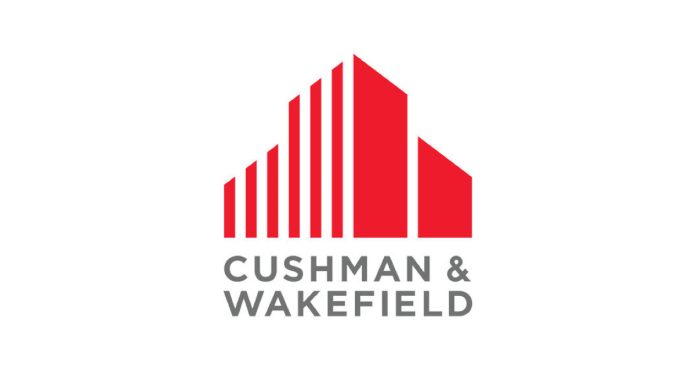- V České republice se do institucionálního bydlení loni investovalo 167 milionů eur
- Jde o 13 % celkového objemu investic do komerčních nemovitostí u nás
- Trh s nájemním bydlením roste v Česku, CEE i celé Evropě
V roce 2023 se v Česku do komerčních nemovitostí investovalo celkem 1 290 milionů eur, investice do nájemního bydlení činily 167 milionů eur, což je třikrát více než v roce předchozím. Vzrostl také podíl tohoto segmentu na celkovém objemu investic do komerčních nemovitostí: zatímco v minulosti (s výjimkou roku 2020[1]) šlo maximálně o 3,3 %, loni to bylo 13 %. Investoři se zajímají o projekty v Praze, ale i regionálních městech, jako je Brno nebo Plzeň. Investovanou částku i percentuální podíl na celku mělo Česko loni nejvyšší ve střední a východní Evropě. V regionu EMEA se loni investice do sektoru „living“ na celkovém investovaném objemu podílely 22 %[2].
| Tabulka 1: Investice do komerčních nemovitostí v Česku | ||
| Rok | Investice do nájemního bydlení (mil. EUR) | Podíl na celkových investicích |
| 2017 | 77 | 2,1% |
| 2018 | 87 | 3,3% |
| 2019 | 10 | 0,3% |
| 20201 | 1 312 | 48,8% |
| 2021 | 52 | 3,1% |
| 2022 | 55 | 3,2% |
| 2023 | 167 | 13,0% |
Zdroj: Cushman & Wakefield
Obliba rezidenčního segmentu v Česku se u investorů zvyšuje, neboť je velmi stabilní. Zatímco v jiných částech nemovitostního trhu může docházet k výrazným výkyvům zejména na straně poptávky, bydlení bude potřeba stále. Nárůstu zájmu o něj nahrávají sociodemografické faktory: stárnutí populace, snižování průměrné velikosti domácností, pokračující urbanizace a přírůstek obyvatel v hlavním městě v důsledku migrace. Zároveň se zhoršuje dostupnost vlastního bydlení a mladší generace mají odlišný způsob života, než bylo běžné dříve, takže podíl nájemního bydlení do budoucna poroste.
Erik Müller, vedoucí týmu rezidenčních poradenských služeb, Cushman & Wakefield: „Výstavba bytů je přitom v Česku a zvláště v Praze dlouhodobě nedostatečná a do budoucna omezená. Po oživení poptávky ze strany domácností způsobeném poklesem úrokových sazeb na hypotékách do pásma 3 až 3,5 % se očekává, že trh v krátké době absorbuje většinu dostupných bytů, čímž vznikne opětovný tlak na růst jejich cen. V dlouhodobém horizontu proto předpokládáme, že nabídka nájemních projektů ke koupi pro investory bude nižší, cena za metr čtvereční vzroste a výnosy u nájemního bydlení třídy A klesnou pod 3,5 %. Toho si je většina investorů vědoma, a proto již vidíme přípravu akvizic na roky 2027 a 2028.“
80 procent investorů chce do bydlení investovat více
Rezidenční trh posiluje i v dalších zemích regionu EMEA, kde pod pojem „living sector“ patří také třeba studentské či seniorské bydlení. Jeho podíl na celkových aktivech držených investory v Evropě loni činil 21 %, zatímco v roce 2014 šlo o 14 %[3].
V průzkumu realitněporadenské společnosti Cushman & Wakefield nazvaném European Living Investor Survey 2024 uvedlo 53 % respondentů, že do tohoto segmentu již alokovali více než 20 % svého portfolia. Téměř 80 % dotázaných pak očekává, že se jejich investice do něj v nadcházejících pěti letech zvýší, u 35 % významně.
Erik Müller, vedoucí týmu rezidenčních poradenských služeb, Cushman & Wakefield: „Z průzkumu zaznívá jasný optimismus panující v EMEA ohledně růstu „living“ segmentu, jemuž i v ostatních zemích nahrávají demografické faktory, zásadní společenské změny a nedostatečná výstavba. Tento segment se již stal zásadní složkou vyváženého realitního portfolia a do budoucna očekáváme, že jeho role poroste.“
Budoucnost: studentské bydlení a udržitelnost
Trendy v Česku kopírují ty na hlavních evropských trzích (Spojené království, Německo, Španělsko) – i když zatím v menší míře. V zahraničí například investoři běžněji cílí na segmenty, jež jsou u nás označované jako alternativní – s rostoucími počty domácích i mezinárodních studentů investuje polovina dotázaných do studentského bydlení. Ve snaze diverzifikovat i v rámci „living“ sektoru pak cílí i na dostupné bydlení, seniorské bydlení nebo co-living – což jsou segmenty, u nichž se v střednědobém horizontu očekává růst.
Za další trend, který do budoucna nelze přehlížet, označují investoři do bydlení u nás i jinde v Evropě udržitelnost. Téměř 80 % respondentů průzkumu uvedlo, že jde v jejich portfoliu o klíčový aspekt, a 70 % je ochotno si připlatit za projekty s nadstandardními prvky udržitelnosti, jako jsou třeba tepelná čerpadla země-voda, recirkulace nejenom dešťové vody, zelené fasády nebo moderní vícepatrové dřevostavby.
Erik Müller, vedoucí týmu rezidenčních poradenských služeb, Cushman & Wakefield: „Přestože Česko zatím není v rámci Evropy pro institucionální nájemní bydlení klíčovým trhem, i zde je z rostoucího podílu tohoto segmentu patrný nárůst jeho významu. Důkazem je několik zásadních transakcí realizovaných v uplynulých dvou letech. Patří k nim Rezidence Hagibor, kterou koupila americká investiční společnost Invesco Real Estate, či Rezidence Vysočanský Mlýn a areál Veltex, které do svého nemovitostního portfolia získal tuzemský investiční fond Mint Investments. Aktivními hráči na tomto trhu jsou také třeba Arcibiskupství pražské, Česká spořitelna a další.“
[1] V roce 2020 došlo v ČR k mimořádné transakci 42 500 bytů, které od společnosti Residomo koupila společnost Heimstaden Bostad.
[2] Zatímco u údajů za Česko a CEE pracujeme s pojmem „rezidenční sektor“, kam zahrnujeme pouze nemovitosti určené k běžnému bydlení, v průzkumu EMEA jde o „living sector“, kam patří také např. studentské či seniorské bydlení.
[3] Zdroj: RCA
- 167 million euros were invested in institutional housing
in the Czech Republic last year - This represents 13% of the total volume of investment
in commercial real estate locally - Rental housing market is growing in the Czech Republic, CEE and Europe
Prague, 16th April 2024 – In 2023, a total of EUR 1,290 million was invested into commercial real estate in the Czech Republic, of which investment into rental housing amounted to EUR 167 million, three times more than in the previous year. The share of this segment within the total volume of commercial real estate investment amounted to 13%, what is a significant raise compared to the 3.3% previous high (with the exception of extraordinary year 2020[1]). Investors are interested in Prague locations, but also in regional cities such as Brno or Pilsen. Investment into the Czech residential segment was the highest in Central and Eastern Europe last year, both in absolute volume and relative share. In the EMEA region, investments into the „living“ sector accounted for 22%[2] of the total invested volume last year.
Table 1: Investment in commercial real estate in the Czech Republic
| Year | Investment in rental residential (EUR million) | Share in total investment |
| 2017 | 77 | 2.1% |
| 2018 | 87 | 3.3% |
| 2019 | 10 | 0.3% |
| 20201 | 1,312 | 48.8% |
| 2021 | 52 | 3.1% |
| 2022 | 55 | 3.2% |
| 2023 | 167 | 13.0% |
Source: Cushman & Wakefield
The popularity of the residential segment in the Czech Republic is increasing among investors due to its stability. While other parts of the property market may experience significant swings, especially on the demand side, housing will always be needed. The increase in interest is driven by socio-demographic factors: ageing population, reduced average household size, continued urbanisation and population growth in the capital caused by migration. At the same time, the availability of owner-occupied housing is decreasing, and younger generations have different lifestyle requirements, therefore the share of rental housing will increase in the future.
Erik Müller, Head of Residential Advisory Services, Cushman & Wakefield: „The construction of apartments in the Czech Republic and especially in Prague has been insufficient for a long time and will remain limited in the future. After recovery in demand from households as a result of a drop in mortgage interest rates to the 3 to 3.5% range, the market is expected to absorb most of the available apartments in the short term, resulting in renewed upward pressure in prices. Therefore, in the long term, we expect the availability of rental projects for purchase by investors to be lower, the price per square metre to rise and yields on grade-A rental housing to fall below 3.5%. Most investors are aware of this and we already see preparations for acquisitions in 2027 and 2028.“
80 percent of investors increase investments in housing
The residential market is also strengthening in other EMEA countries, where the term „living sector“ also includes student and senior housing. It accounted for 21% of total assets held by investors in Europe last year, up from 14% in 2014[3].
In Cushman & Wakefield‘s European Living Investor Survey 2024, 53% of respondents said they had already allocated more than 20% of their portfolio to this segment. Almost 80% of respondents expect their investment to increase over the next five years, with 35% expecting it to increase significantly.
Erik Müller, Head of Residential Advisory Services, Cushman & Wakefield: „The survey shows a clear optimism in EMEA about the growth of the living segment, which is also supported by demographic factors, major societal changes and a lack of construction. This segment has already become an essential component of a balanced real estate portfolio and we expect its role to grow in the future.“
The future: student housing and sustainability
Trends in the Czech Republic follow those in the main European markets (UK, Germany, Spain) – although to a lesser extent. Abroad, it’s more common for investors to target segments that are labelled as alternative in the Czech Republic: with growing numbers of both local and international students, half of the respondents are investing in student housing. In an effort to diversify within the living sector, they also target affordable housing, senior housing or co-living – segments that are expected to grow in the medium term.
Another trend that cannot be overlooked for the future is sustainability, as stated by investors into housing in the Czech Republic and across Europe. Nearly 80% of the survey respondents said it is a key aspect in their portfolio, and 70% are willing to pay extra for projects with superior sustainability features such as ground-source heat pumps, recirculation of (not only) rainwater, green facades or modern multi-storey timber buildings.
Erik Müller, Head of Residential Advisory Services, Cushman & Wakefield: „Although the Czech Republic is not yet a key market for institutional rental housing in Europe, the growing share of this segment shows its increasing importance. This is evidenced by several major transactions in the past two years, which include Rezidence Hagibor, bought by the American investment company Invesco Real Estate, or Rezidence Vysočanský Mlýn and the Veltex complex, acquired by the domestic investment fund Mint Investments. There are more active players in this market, including Arcibiskupství pražské, Česká spořitelna and others.“
[1] In 2020, the Czech Republic saw an extraordinary transaction of 42,500 apartments, which were bought by Heimstaden Bostad from Residomo.
[2] While with data for the Czech Republic and CEE the term „residential sector“ is used, which includes only properties intended for standard living, the EMEA survey refers to the „living sector“, which also includes, for example, student and senior housing.
[3] Source: RCA
Zdroj: Cushman & Wakefield









